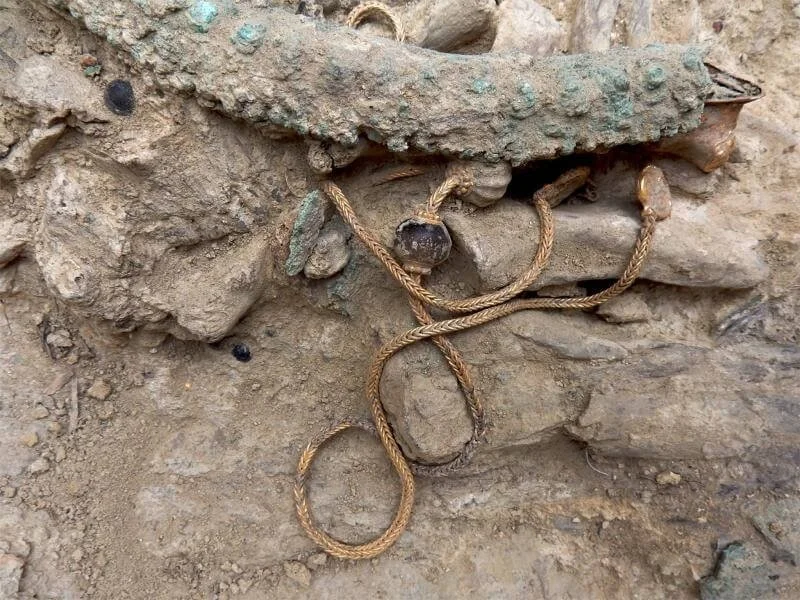Archaeologists have discovered evidence of horse movement close to a mountain pass, not far from Galdhpiggen, the highest mountain in Norway.
The fact that both the bit and the leather straps that have been fastened to the horse's head are preserved makes it possible to determine how old the bridle is. (Photo: Espen Finstad / Secrets of The Ice / Innlandet County Municipality)
From beneath the ice, a metal bit and some of the leather straps that secure around the horse's head have been seen.
“The bridle has a shape that suggests it could be from the Viking Age,” Espen Finstad says to sciencenorway.no.
He works for the Innlandet County Municipality as a glacial archaeologist.
During the Viking Age, traffic through a mountain pass on Lomseggen was at its busiest.
Numerous ancient artifacts have already been discovered in the area as a result of snow and ice melting. The usage of this mountain route by Norwegians for more than 1,200 years has been made known (link in Norwegian).
However, the bridle discovered by archaeologists this year implies that other animals also walked here.
The journey, which took place over 2,000 meters above sea level, also involved horses.
The recent expedition took place on a smaller snow patch south of Lendbreen. (Photo: Espen Finstad / Secrets of The Ice / Innlandet County Municipality)
“We have never made such a discovery before. It essentially completes the picture that this is an ancient travel route,” Finstad says.
According to the archaeologists who work on the Secrets of the Ice conservation program's social media posts about the discovery,
We just made an incredibly discovery on the south side of the Lendbreen pass: An iron horse bit, with parts of the leather bridle preserved!❤️ It could well be from the Viking Age, when traffic through the pass was at its peak. But let's see what the radiocarbon date says. pic.twitter.com/cIRNXsZD9Y
— Secrets Of The Ice (@brearkeologi) September 7, 2023
A few months before they learn the solution
The archaeologists are particularly intrigued by the strap, or halter, that is fastened to the bit.
The horse bridle can actually be dated thanks to this.
The archaeologists will use carbon-14 dating to determine whether the find indeed dates to the Viking Age.
The definitive answer will likely take a few months, but Finstad is confident that it dates to the Iron Age or the early Middle Ages.
The archaeologists also found part of an old horseshoe that has been lying under the ice. (Photo: Espen Finstad / Secrets of The Ice / Innlandet County Municipality)
Horseshoes and horse manure
One of the many finds made by archaeologists on this year's expedition is a horse bridle.
In addition, they discovered horse excrement, linens, horseshoes, leaf food, a piece of a horse snowshoe, a knife, and other little wooden artifacts. approximately 150 things in all.
Finnes notes that although the mountain pass is like a gold mine for archaeologists, the discoveries are relatively uncommon in the overall scheme of things.
The preservation of organic stuff including wood, leather, fabrics, and feces is what makes this find so unique.
For centuries, the ice has used as a freezer. But it's melting now.
“The fact that the ice is now melting due to man-made climate change is tragic. The paradox is that new and exciting knowledge about our common past is emerging,” Finnes says.









